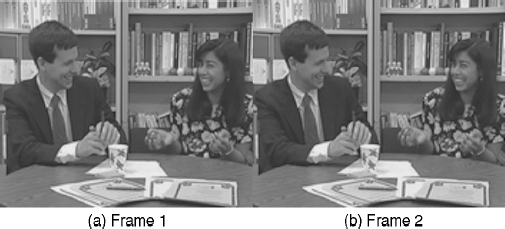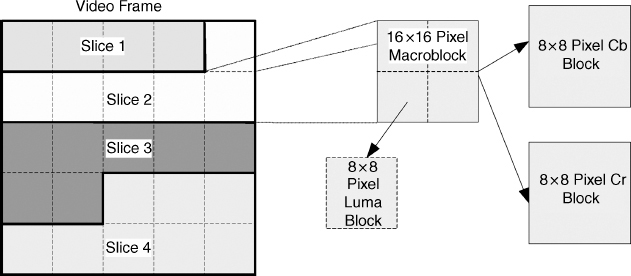2.3 Fundamentals of Video Compression
This section describes how spatial redundancy and temporal redundancy can be removed from a video signal. It also describes how a typical video codec combines the two techniques to achieve compression.
2.3.1 Video Signal Representation and Picture Structure
Video coding is usually performed with YUV 4:2:0 format video as an input. This format represents video using one luminance plane (Y) and two chrominance planes (Cb and Cr). The luminance plane represents black and white information, while the chrominance planes contain all of the color data. Because luminance data is perceptually more important than the chrominance data, the resolution of the chrominance planes is half that of the luminance in both dimensions. Thus, each chrominance plane contains a quarter of the pixels contained in the luminance plane. Downsampling the color information means that less information needs to be compressed, but it does not result in a significant degradation in quality.

Figure 2.2 Temporal redundancy occurs when there is a large amount of similarity between video frames

Figure 2.3 Most video codecs break up a video frame into a number of smaller units for coding
Most video coding standards split each video frame into macroblocks (MB), which are 16 × 16 pixels ...
Get Visual Media Coding and Transmission now with the O’Reilly learning platform.
O’Reilly members experience books, live events, courses curated by job role, and more from O’Reilly and nearly 200 top publishers.

